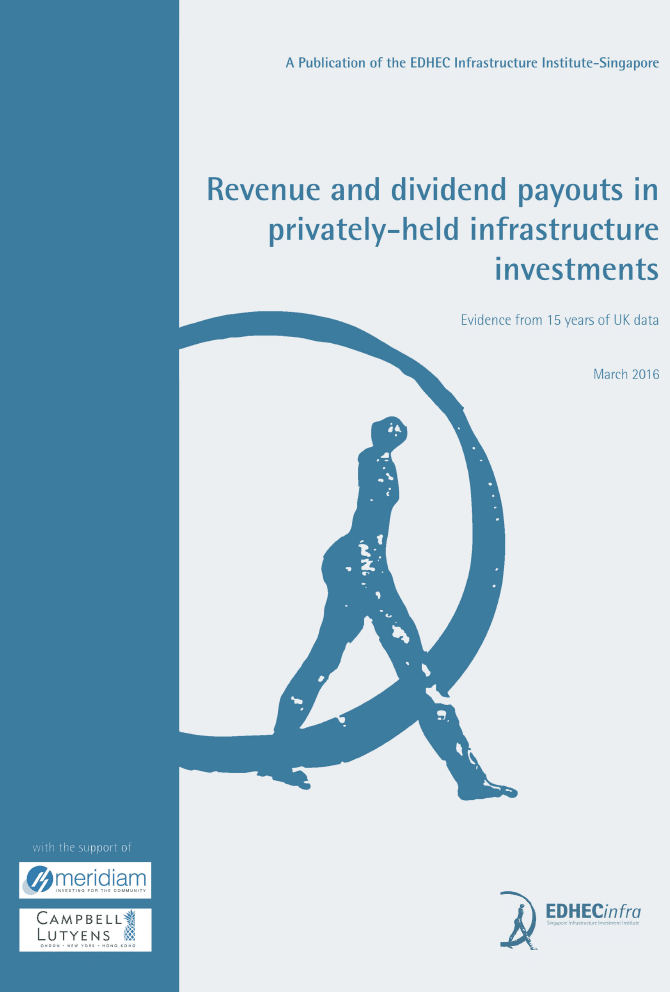EDHECinfra Paper
Revenue and dividend pay-outs in privately-held infrastructure investments: Evidence from 15 years of UK data
In this paper drawn from the EDHEC/Meridiam/Campbell Lutyens Research Chair, and using the largest database of infrastructure cash flows available for research, we compare the revenues, profits and dividend pay-out behaviour of infrastructure and non-infrastructure firms in the UK. The paper addresses two main questions: do infrastructure firms correspond to a different business model than other firms active in the economy? And do infrastructure firms exhibit a different equity pay-out behaviour than other firms?



